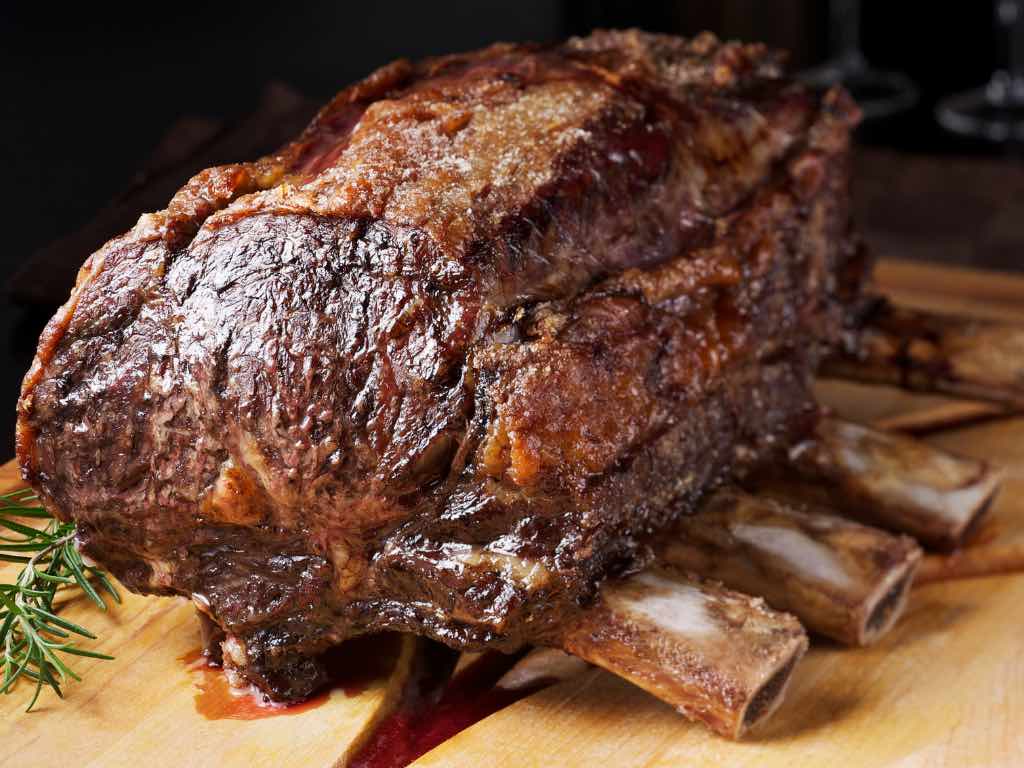
Exploring the Savory What is Rib Meat: A Culinary Journey
|
|
Time to read 4 min
Welcome to One Stop Halal!
Written by: Samir P.
|
|
Time to read 4 min
What is Rib meat, an irresistible indulgence for meat lovers, sits at the pinnacle of carnivorous delights. Its succulent flavor, tender texture, and versatility in cooking make it a cherished component of numerous culinary traditions worldwide. In this blog, we delve deep into the intricacies of rib meat, exploring its various forms, culinary uses, and cultural significance.
At its essence, rib meat refers to the tender, flavorful muscle tissue found around the ribs of various animals. This delectable cut extends beyond the porcine realm, encompassing beef, lamb, and poultry. Each type of rib meat boasts its unique flavor profile, texture, and culinary applications, making it a versatile ingredient in kitchens globally.
Among the most celebrated forms of rib meat is that derived from beef. Renowned for its robust flavor and marbling, beef rib meat offers a rich, indulgent experience that satisfies even the most discerning palates. This cut lends itself to many culinary creations, from succulent prime ribs to mouthwatering beef short ribs. Whether slow-roasted to perfection or seared over an open flame, beef rib meat captivates diners with its melt-in-your-mouth tenderness and savory undertones.
In the realm of lamb, rib meat takes on a slightly milder yet equally delightful character. Tender and juicy, lamb rib meat offers a delicate balance of flavors, often enhanced by aromatic herbs and spices. From classic rack of lamb to hearty lamb chops, this cut lends itself to many culinary interpretations, showcasing the versatility of this beloved protein. Whether grilled to perfection or braised until fork-tender, lamb rib meat never fails to impress with its juiciness and depth of flavor.
While less commonly recognized, poultry rib meat holds its own in the culinary world, offering a leaner yet equally flavorful option for discerning diners. From the tender rib meat of chicken to the robust flavors of turkey, this versatile cut provides a canvas for culinary creativity. Whether roasted, grilled, or simmered in a savory sauce, poultry rib meat offers a delightful alternative for those seeking a lighter yet satisfying dining experience.
To discuss rib meat, one must mention the quintessential barbecue experience. Whether beef or lamb, ribs are often slow-cooked over smoldering wood or charcoal, resulting in tender, smoky perfection. From Memphis-style dry rubs to Kansas City's sweet and tangy sauces, barbecue ribs showcase regional barbecue traditions' diverse flavors and techniques.
In upscale restaurants, rib meat takes on a new identity, transformed into gourmet masterpieces. Beef short ribs, braised to fork-tender perfection, are often served atop creamy polenta or accompanied by seasonal vegetables. Delicately seasoned and roasted to perfection, lamb racks are paired with rich sauces and elegant garnishes, elevating the dining experience to new heights.
Beyond American barbecue and fine dining, rib meat is prominently featured in cuisines from around the world. In Korean cuisine, galbi (marinated beef short ribs) are grilled to perfection and served with a variety of banchan (side dishes), showcasing the bold flavors of soy sauce, garlic, and sesame. In Argentina, asado (grilled beef ribs) are a staple of traditional barbecue gatherings, cooked over an open flame and served with chimichurri sauce for a burst of vibrant flavor.
Rib meat also stars in classic comfort food dishes that warm the soul and satisfy the appetite. From hearty beef rib stews to slow-cooked lamb shanks, these dishes embody the essence of home cooking and culinary nostalgia. The tender, succulent meat falls effortlessly off the bone, enveloped in rich, flavorful sauces that evoke memories of family gatherings and cozy Sunday dinners.
Chefs and home cooks alike continue to explore innovative ways to incorporate rib meat into their culinary repertoire. Whether it's stuffing chicken breasts with ground rib meat or adding shredded beef ribs to tacos, the possibilities are endless. Rib meat's versatility lends itself to experimentation, allowing for endless creativity in the kitchen.
In conclusion, rib meat offers culinary possibilities, from traditional barbecue favorites to gourmet creations and global-inspired dishes. Its tender texture, rich flavor, and versatility make it a cherished ingredient in kitchens worldwide, inviting chefs and home cooks to explore its endless culinary potential.
Welcome to your favorite butcher shop. We carry custom cuts of beef, chicken, lamb, goat, grass-fed beef, wagyu, deli, and more. We ship across the United States in 1-2 business days.
In conclusion, rib meat is a testament to the culinary arts, captivating diners with its tantalizing flavors, tender texture, and cultural significance. Whether derived from beef, lamb, or poultry, this beloved cut inspires chefs and delight food enthusiasts worldwide. From classic comfort food favorites to gourmet culinary creations, rib meat remains a timeless indulgence, inviting diners on a savory culinary exploration and discovery journey. So, the next time you savor a succulent rack of ribs or tender beef short ribs, take a moment to appreciate the culinary masterpiece that is rib meat.

© 2025 One Stop Halal, Inc.